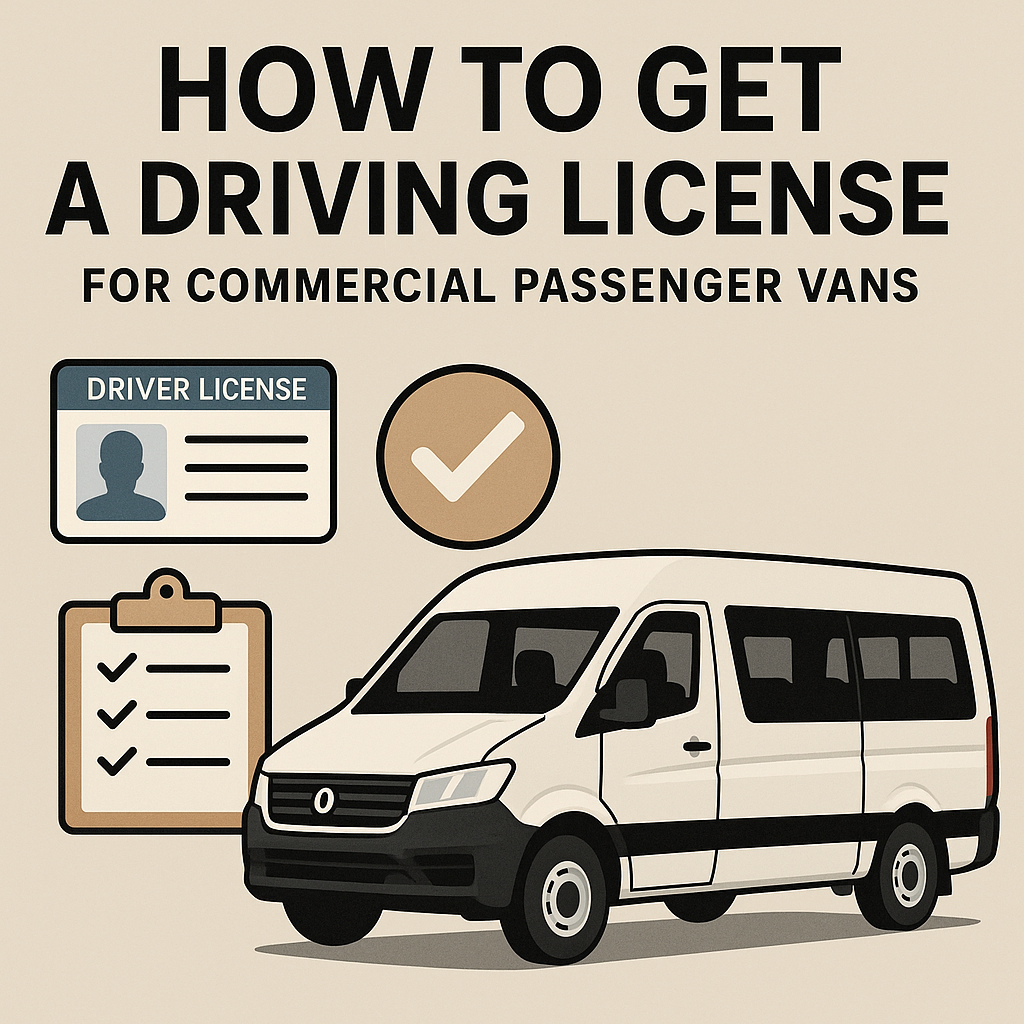How to Get a Driving License for Commercial Passenger Vans – A Realistic Guide for Future Professionals
Starting a career or business in passenger transport can be rewarding, flexible, and even exciting — but before you get behind the wheel of a van carrying clients, tourists, or employees, there’s a key milestone you must achieve: getting your commercial driver’s license for passenger transport.
This article walks you through the process step by step — from basic eligibility and training to the realities of managing this as a professional. We also explore how TransferVista, a smart transport management platform, can support your business once you’re licensed and ready to operate.
What Is a Commercial Passenger Vehicle License?
A commercial passenger vehicle license allows you to operate vans or minibuses that carry people in return for payment. Unlike a regular driver’s license, which only permits you to drive privately, this commercial license certifies you to transport others professionally — for airport shuttles, guided tours, corporate transfers, or any other paid service.
In many countries, the exact name and class of this license vary. In the UK, for example, you’d need a D1 license to drive a minibus with 9–16 passenger seats. In the United States, any vehicle designed to carry more than 15 passengers typically requires a Commercial Driver’s License (CDL) with a Passenger Endorsement (P). Across the EU, licensing is governed by similar principles, though local rules differ slightly.
What matters is this: if you intend to drive a vehicle professionally and carry paying passengers, even occasionally, you need the correct license class. Operating without one can lead to serious penalties, insurance problems, and a lack of legal protection if something goes wrong.
Why This License Matters — More Than Just Legality
Obtaining your commercial license isn’t just about following the rules. It sends a clear message to passengers, partners, and insurers that you’re serious about what you do.
With a valid commercial passenger vehicle license:
- You’re eligible for contracts with corporate clients, travel agencies, and hotels.
- You can drive legally for private events like weddings or conferences.
- You qualify for commercial insurance coverage and liability protection.
- You build trust with clients who expect professionalism and safety.
It’s the first step in turning your driving skills into a reliable, income-generating profession.
Who Needs This License?
If you plan to:
- Offer airport transfers for families or business groups
- Run a private van service or tourist transport company
- Drive employees for a company in a company-owned minibus
- Partner with a travel agency as a subcontracted driver
- Work as a freelance chauffeur for events
…then you most likely need this license.
Even if you only drive occasionally or work part-time, legal compliance is non-negotiable. In fact, many customers or platforms require proof of commercial licensing before they even consider working with you.
How to Get a Commercial Driving License for Passenger Vans
Let’s walk through the full process of obtaining this license in a practical, down-to-earth way. The exact order and requirements may differ depending on your location, but this guide reflects the common path taken in most Western countries.
Step 1: Meet the Basic Eligibility Requirements
You’ll need to already hold a standard driving license — usually for at least 12 to 24 months. Age requirements differ slightly, but 21 years is often the minimum for passenger transport.
In most cases, you’ll also need to have no serious driving violations, be medically fit (vision, hearing, cardiovascular health), pass a background check, especially if you’ll be driving minors or vulnerable individuals and prove language proficiency in the local official language (for test purposes).
These criteria aim to ensure that you’re both capable and trustworthy, key qualities in a professional driver.
Step 2: Pass a Medical Examination
Driving a van with up to 16 passengers is a serious responsibility. That’s why many licensing authorities require a health check, either from your family doctor or a certified transport health professional.
This usually includes:
- Vision and eye coordination tests
- Hearing check
- Blood pressure and cardiovascular assessment
- Neurological and mobility evaluation
If you pass, you’ll receive a medical certificate that you must include with your license application.
Step 3: Study and Prepare for the Knowledge Test
Every commercial license includes a written theory test. It goes beyond road signs and basic traffic rules. You’ll need to understand:
- Passenger safety procedures
- Emergency protocols (what to do in the event of a fire, medical incident, or accident)
- How to perform daily vehicle checks
- Driver’s hours regulations (how long you can legally drive without rest)
- Laws related to commercial vehicle operation and passenger transport
Many aspiring drivers enroll in a transport school or training program, which provides both classroom instruction and vehicle-based lessons. Not only does this help you pass the test: it makes you a more confident, professional driver.
Step 4: Take the Theory Test
This is typically done at a licensed testing center and includes multiple-choice questions, situational scenarios, and sometimes hazard perception video clips. Some countries may offer it in digital form.
Passing this test earns you a learner’s permit or provisional license, which allows you to begin real-world training under supervision.
Step 5: Behind-the-Wheel Training and Practical Exam
The practical exam is where your skills are truly tested.
You’ll be asked to demonstrate pre-trip inspections (checking tires, lights, brakes, mirrors), smooth and safe driving, maneuvering in tight spaces, correct use of mirrors and blind spots, boarding and unloading passengers and dealing with simulated emergencies.
In most cases, you’ll take the test in a commercial vehicle similar in size to what you plan to operate: usually a 9- to 16-seat van or minibus.
Upon passing, you receive your commercial driver’s license and are legally qualified to drive passengers.
What Happens After You’re Licensed?
Once you’ve obtained your license, a world of opportunities opens up. Whether you’re planning to drive as a solo operator or manage a fleet, the next steps include:
- Choosing the right vehicle(s)
- Acquiring proper insurance coverage
- Registering your transport business or company
- Complying with local regulations (e.g., displaying your license number, keeping logbooks)
This is also the perfect time to start thinking about how you’ll manage your business digitally. That’s where TransferVista comes in.
How TransferVista Helps You Build a Sustainable Transport Business
Getting the license is only the first step. Operating a professional transport service requires structure, consistency, and reliable tools, especially if you want to stand out from competitors.
TransferVista is a cloud-based platform built for transport operators of all sizes. Whether you’re driving a single passenger van or managing a multi-city fleet, it gives you the digital infrastructure to stay organized and professional.
With TransferVista, you can:
- Accept and manage online bookings
- Assign jobs to licensed drivers
- Set fixed prices, hourly rates, or mileage-based fees
- Monitor driver activity and vehicle locations
- Send automated trip reminders to clients
- Handle invoicing, payments, and client records: all in one place
You don’t have to worry about complicated software or hiring a full back office team. TransferVista is designed to be intuitive, scalable, and accessible from your phone or laptop.
Can You Hire a Commercial Driver for a Day?
Yes — and it’s increasingly common. Many licensed commercial drivers offer day hire services, where the client pays for the driver’s time rather than a specific trip.
This is useful for Business roadshows with multiple appointments, Family trips with several destinations, Tourist groups needing flexible stops and Weddings or conferences where a standby driver is helpful.
A typical day hire includes a pre-arranged time window (often 8–10 hours), a set route or flexible schedule, and a mileage limit. Additional hours or kilometers can be charged separately.
If you’re offering this kind of service, TransferVista lets you create custom packages, day rates, and instant quotes for clients. It simplifies booking, tracking, and invoicing, so you can focus on delivering a smooth experience.
Final Thoughts
Getting a commercial driving license for passenger vans is a process that requires preparation, commitment, and responsibility — but the payoff is real. Whether you want to drive professionally, start a transport company, or add passenger services to your existing business, the right license opens the door.
Remember, this isn’t just about passing a test. It’s about stepping into a trusted role: one that demands safety, punctuality, and professionalism every day.
Once you’re licensed, tools like TransferVista make the rest of the journey easier. From managing bookings to tracking compliance, it supports your growth — whether you’re just starting out or expanding a fleet.


